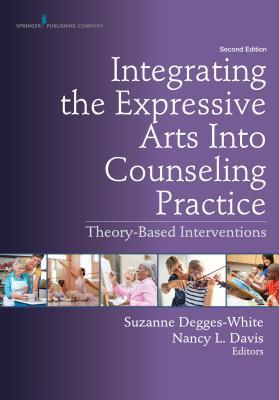Expanded and revised to reflect a broader understanding of the complementary approach to therapeutic treatment, this is the only text to integrate expressive arts counseling techniques with major theories of counseling and psychology. Substantial changes to the second edition include new chapters that address neuroscience and counseling, trauma-informed counseling, animal-assisted therapy, mindfulness and counseling, and family counseling, along with a greater emphasis on cultural and diversity considerations throughout. The book is updated with over 30 new interventions including animal-assisted and videographic interventions, and new information about the neuroscientific foundations of expressive arts therapies. Updated references in each chapter and a suite of Instructor's Materials also add to the value of the second edition.
The text integrates expressive arts therapies with 12 commonly used treatment modalities. Each chapter reviews a particular theory and describes how expressive and creative techniques can support and be easily integrated within that orientation. Over 90 field-tested, step-by-step interventions--created by leading practitioners--offer students and clinicians techniques that can be put to use immediately. A full suite of online instructor's materials, including an Instructor's Manual and chapter PowerPoint slides, is also available for instructors.
New to the Second Edition:
- New chapters address neuroscience and counseling, trauma-informed counseling, animal-assisted therapy, mindfulness and counseling, and family counseling and the expressive arts
- Cultural and diversity considerations in each chapter
- Updated with new references
- Over 30 new interventions including videography
- Instructor's materials, including an Instructor's Manual and PowerPoint slides
Key Features:
- Integrates expressive arts counseling techniques with 12 major theories of counseling and psychology
- Presents over 90 expressive arts interventions in easy, step-by-step format
- Includes art, writing, bibliotherapy, drama, music, movement, dance, puppetry, and sand play
- Discusses appropriate populations, settings, and diagnoses for each intervention
- Includes interventions that can be put to use immediately
